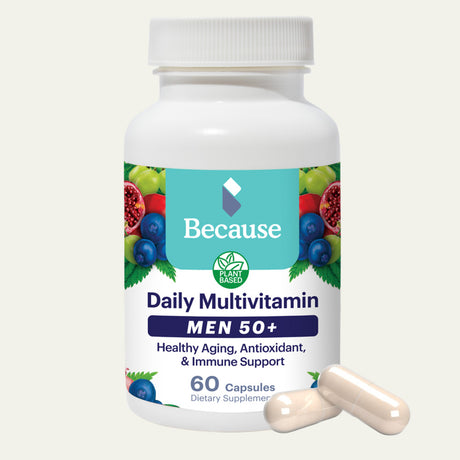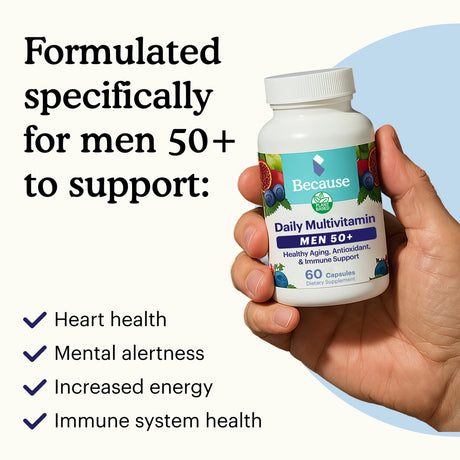As we get older, one of the consequences of our bodies aging is the involuntary loss of muscle mass. After we reach 30, our muscle mass can decrease up to 8% per decade. Once we reach 60, this percentage can double.
With the loss of muscle mass, you may also experience a tougher time moving around and a harder time lifting heavy objects.
In this article, you will learn how to recognize the loss of muscle mass, adopt preventative measures, and implement practices in your life to reverse the effects of muscle loss and regain some mobility, function, and freedom!
Things You Should Know About Muscle Loss
Being aware of how your body changes and how these changes take place in your body is vital to understanding how to live with and treat these changes as soon as possible. Involuntary loss of muscle mass due to age describes the condition known as sarcopenia. Sarcopenia affects 10% of adults over 50. Low muscle mass and decreased muscle performance characterize this condition.
Signs That You Are Experiencing Muscle Loss
If you notice a sudden decrease in energy or strength, such as when you climb the stairs or go to lift a heavier object, this could be a symptom of muscle loss.
Similarly, if your hand grip is weaker than usual, this could also signify sarcopenia. In fact, a hand-grip test is utilized by many clinics to determine if an illness could be muscle loss related.
Another important sign to be aware of is sudden or unexplainable weight loss. This could be due to a loss of muscle rather than loss of fat, so be aware of your weight. If you notice any of these signs, contact your physician about muscle loss.
Causes
While age is a common cause of muscle loss, there are other causes to be aware of, especially if you have other health conditions.
Decline in Physical Activity
Muscle loss can seem to be an endless cycle, as it can make it tougher to get exercise to retain the muscle. In turn, an inability to exercise can lead to more muscle loss. However, decline in activity often isn’t always voluntary. Bedrest, injury, or illness can result in a decrease in your physical activity. Lack of physical activity is one of the biggest contributing factors besides age that affects muscle loss, so it is especially important to make sure your body gets the exercise it needs.
Inadequate Nutrition
An unbalanced diet is another leading cause of developing sarcopenia. If you are not consuming the calories, nutrients, vitamins, minerals, and proteins your body needs, it will not be able to synthesize muscle. As we age, our tastes, appetites, and food quality can change due to illness or dental problems. This can result in inadequate nutrition, which can lead to sarcopenia or muscle loss. This is why multivitamins can really come in handy for filling nutritional gaps for people of any age!
Changes in Hormones
Hormones are chemical messengers that travel through the blood and send signals to every organ in our body to perform different functions. They are vital for many of our bodily processes including our development and growth, metabolism, brain function, and the production of important substances.
As we age, our hormones change, too. Some hormone levels in the blood increase, while others decrease. Our body’s target receptors may become more or less sensitive to certain hormones as well, and this can affect our organ system and how well they perform their functions.
The specific hormones that increase muscle growth and metabolism are the growth hormone, insulin growth factor, and androgens. These hormones are anabolic, which means they serve to build up muscle mass rather than tear them down. Some hormones that decrease muscle mass are glucocorticoids. These hormones work catabolically, which means they break down muscle.
Tips To Prevent and Reverse Muscle Loss
There is a bright side of learning to recognize signs of muscle loss and understand your risk. The better your understanding of muscle loss, the better prepared you are to prevent and even reverse it!
Below are the best recommendations for preventing and reversing muscle loss and keep building muscle even after you reach 60.
Exercises for Muscle Loss
Resistance Training
NPR news reports how strength training can prevent and even reverse muscle loss by as much as 2.5 pounds in only five months of strength training. In addition, scientists agree that physical activity—specifically strength training—can have a large reversing effect on muscle loss.
Resistance training includes lifting weight, using resistance bands, or bodyweight exercises. These exercises can also stretch your muscles, which increases your body’s rate of muscle building and can help your muscle fibers to increase in size.
If you have limited mobility and cannot lift heavy weights, try focusing on just one body part at a time. For instance, if your upper body is easier to exercise, focus on training your arms and shoulders. If you have severe shoulder pain or upper body challenges, try to target your strength training efforts on your lower body. You can do many weight-lifting exercises even while you’re sitting down or on your knees to help you balance.
Tip: If you find you’ve pushed just a little too hard and feel sore, that’s generally a good thing, but if you find you’re needing a little extra help relieving some of that post-workout ache, try a hemp extract roll on to soothe tense muscles.
Cardio
Cardio is another way to combat muscle loss. Running may not be ideal for your physical abilities, but walking, jumping jacks, and any movement that increases your heart rate and works your body is great for treating sarcopenia! Research studying 277 Japanese adults 65 and older showed an increase in muscle mass from six months of just walking, especially in those who already had some form of muscle loss or sarcopenia.
Nutrition for Muscle Loss
Nutrition is also a great way to prevent and reverse muscle loss.
Protein is what builds the muscles in our bodies, so it’s vital to ensure we are consuming enough protein to maintain and grow our muscle index. Rich sources of protein include meat, fish, eggs, or soy protein products like tofu.
Consuming enough vitamin D is also important for your body's muscle growth. If you are deficient in this vitamin, you may be susceptible to muscle loss and fragility. Vitamin D supplements lower your risk of falling and strengthen your muscles, so be sure to talk to your physician about whether vitamin D supplements are right for you.
Omega-3 Fatty Acids are also a great promoter of muscle growth. These fatty acids reduce tension and can help increase the rate at which you grow muscle, especially if you partake in some form of resistance training. Additionally, their joint-supporting properties can make it easier on your body to participate in strength training.
Finally, creatine can have positive effects on sarcopenia and muscle loss. It can reverse muscle atrophy if taken with exercise and a balanced diet. This protein is typically located in the liver and is important to your body’s muscle strength and growth.
As with any supplement or diet change, the effects are magnified when intertwined with exercise. Finding the right exercise-nutrition balance for you may take time, so be patient and consult your physician if you have more questions.
Summary
Sarcopenia is the involuntary loss of muscle specifically related to age. It may seem like this condition is inevitable, but modern research shows that there is hope in overcoming muscle loss and regaining the muscle and freedom of movement you once had!
By being able to recognize signs and risk factors of muscle loss and implementing the various exercises and diet changes mentioned in this article, you can prevent and even reverse muscle loss.
Sources:
Newman, A. B., Kupelian, V., Visser, M., Simonsick, E. M., Goodpaster, B. H., Kritchevsky, S. B., ... & Harris, T. B. (2006). Sarcopenia: alternative definitions and associations with lower extremity function. Journal of the American Geriatrics Society, 54(5), 834-840. https://www.ncbi.nlm.nih.gov/pmc/articles/PMC2804956/Morley, J. E., Abbatecola, A. M., Argiles, J. M., Baracos, V., Bauer, J., Bhasin, S., ... & Evans, W. J. (2011). Sarcopenia with limited mobility: an international consensus. Journal of the American Medical Directors Association, 12(6), 403-409. https://www.ncbi.nlm.nih.gov/pmc/articles/PMC4269139/
Ferrando, A. A., Tipton, K. D., Doyle, D., Phillips, S. M., Cortiella, J., & Wolfe, R. R. (1998). Testosterone injection stimulates net protein synthesis but not tissue amino acid transport. American Journal of Physiology-Endocrinology and Metabolism, 275(5), E864-E871. https://pubmed.ncbi.nlm.nih.gov/9609780/
Hakkinen, K., Pakarinen, A., Kraemer, W. J., Newton, R. U., & Alen, M. (2000). Basal concentrations and acute responses of serum hormones and strength development during heavy resistance training in middle-aged and elderly men and women. The Journals of Gerontology Series A: Biological Sciences and Medical Sciences, 55(6), M412-M418. https://pubmed.ncbi.nlm.nih.gov/10857757/
Basualto-Alarcon, C., Varela, D., Duran, J., Maass, R., Estrada, M., Urzua, C., ... & Jaimovich, E. (2015). Cellular and molecular mechanisms associated with muscle wasting in cancer patients: a current review. International Journal of Molecular Sciences, 16(4), 11309-11352. https://pubmed.ncbi.nlm.nih.gov/26073423/
Yarasheski, K. E., Zachwieja, J. J., & Bier, D. M. (1993). Acute effects of resistance exercise on muscle protein synthesis rate in young and elderly men and women. American Journal of Physiology-Endocrinology and Metabolism, 265(2), E210-E214. https://pubmed.ncbi.nlm.nih.gov/8342614/
Kaiser, F. E., Silver, A. J., Morley, J. E., & Baumgartner, R. N. (2000). Testosterone and estradiol improve muscle function in hypogonadal men and women with low bone density: a parallel, randomized, placebo-controlled study. The American Journal of Clinical Nutrition, 71(4), 1012-1017. https://pubmed.ncbi.nlm.nih.gov/10731511/
Ivey, F. M., Tracy, B. L., Lemmer, J. T., NessAiver, M., Metter, E. J., Fozard, J. L., ... & Hurley, B. F. (2000). Effects of strength training and detraining on muscle quality: age and gender comparisons. The Journals of Gerontology Series A: Biological Sciences and Medical Sciences, 55(3), B152-B157. https://pubmed.ncbi.nlm.nih.gov/10737688/
Brinkmann, C., & Przybylski, R. J. (2002). A review of hormone replacement therapy in postmenopausal women with heart disease. Journal of Cardiovascular Nursing, 16(1), 91-104. https://pubmed.ncbi.nlm.nih.gov/11783660/
Fielding, R. A., Vellas, B., Evans, W. J., Bhasin, S., Morley, J. E., Newman, A. B., ... & Aubertin-Leheudre, M. (2011). Sarcopenia: an undiagnosed condition in older adults. Current consensus definition: prevalence, etiology, and consequences. International working group on sarcopenia. Journal of the American Medical Directors Association, 12(4), 249-256. https://www.ncbi.nlm.nih.gov/pmc/articles/PMC3712836/














